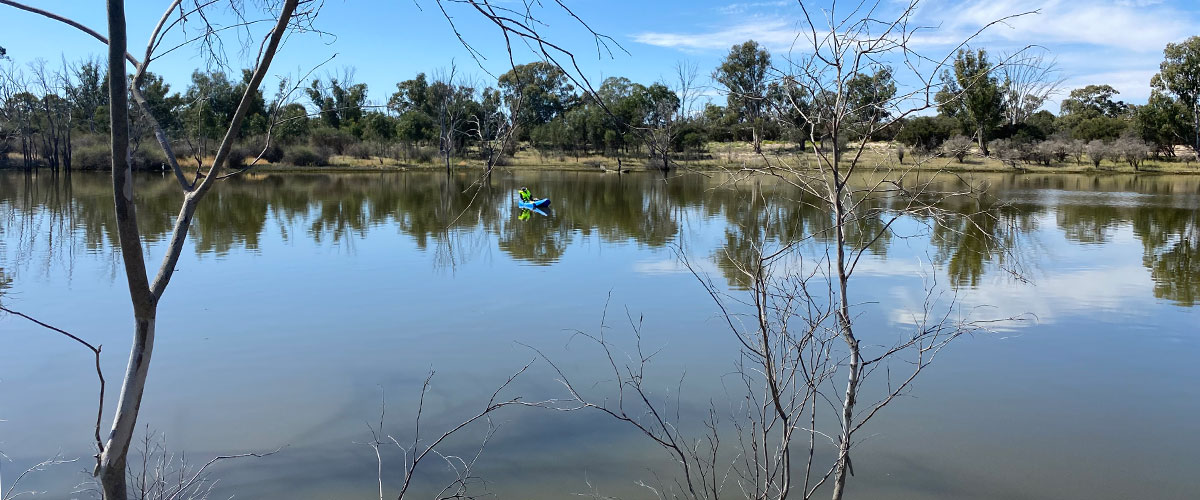Providing student research grants is a key feature of our Science and Knowledge program, where we assist students in progressing their post-graduate studies and careers.
The program encourages students in the ecological sciences and helps us understand our nature reserves better.
We are delighted to bring you this research report update from 2023 Grand Start Grants Honours recipient, Emily Wilson.
Assessing salinity dynamics in environmentally watered wetlands along the South Australian River Murray
- Emily Wilson
- Grant Start Grants / Honours recipient
- Bachelor of Science (Honours) (Biodiversity and Conservation), Flinders University
The Murray-Darling Basin is a system of rivers and lakes encompassing approximately 14% of Australia’s land area1. Wetlands are crucial to sustaining biodiversity within the Basin, supporting a large range of native flora and fauna. However, human interventions such as the construction of dams, locks, and weirs have disrupted natural flow patterns, causing a reduction of wetland inundations and major biodiversity declines2. Altered flow, along with land clearance, has increased salt build-up, becoming one of the most challenging environmental issues facing the Murray-Darling Basin3. To combat this, environmental water allocations were introduced with the main goal of maintaining and protecting vulnerable areas of the Basin4.
Emily’s study assessed salinity dynamics in seven environmentally watered wetlands along the South Australian River Murray, including Murbpook Lagoon within Nature Foundation’s Murbpook Nature Reserve. Results determined that when wetlands are reconnected to the main channel, surface water flushes salt from the wetland, thereby supporting the notion that natural flooding reduces wetland salinity.

River channel electroconductivity was found to have the most influence on wetland electroconductivity, highlighting the need for effective monitoring prior to the delivery of environmental water. This study provides valuable insight into wetland salinity in post-flood, high-flow periods and offers a benchmark for assessing how flushing flows influence wetland salinity.
Emily’s study was carried out over quite a unique period in which the River Murray experienced its largest flood event since 1956, followed later in the year by a three month high-flow period. She suggests that these events likely muted many of the expected trends that would be present in a ‘normal’ flow year, and recommends that her study methods are repeated in drier periods to comprehensively evaluate the impact of environmental watering on wetland salinity.
References:
- 1 Reid and Brooks 2000
- 2 Beesley, King et al. 2014
- 3 Hart, Walker et al. 2020
- 4 Raulings, Morris et al. 2011
Learn more about our Research Grants here.
Donate to and support our Grand Start Grants here.